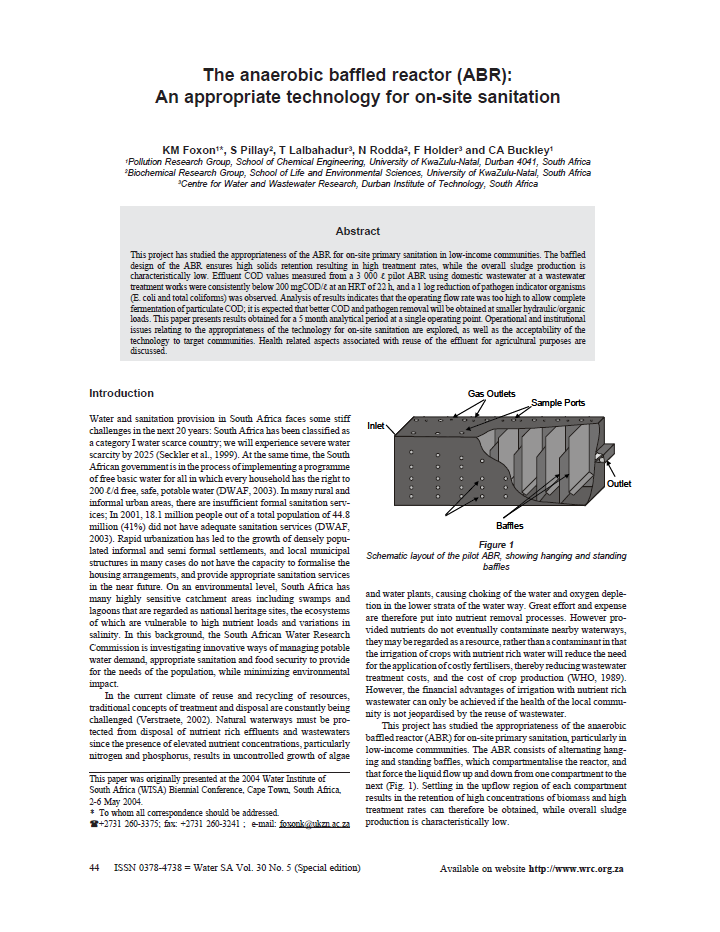The anaerobic baffled reactor (ABR) An appropriate technology for on-site sanitation Foxon, K. M., Pillay, S., Lalbahadur, T., Rodda, N., Holder, F., Buckley, C. A. (2004)
This project has studied the appropriateness of the ABR for on-site primary sanitation in low-income communities. The baffled design of the ABR ensures high solids retention resulting in high treatment rates, while the overall sludge production is characteristically low. Effluent COD values measured from a 3 000 l pilot ABR using domestic wastewater at a wastewater treatment works were consistently below 200 mgCOD/l at an HRT of 22 h, and a 1 log reduction of pathogen indicator organisms (E. coli and total coliforms) was observed. Analysis of results indicates that the operating flow rate was too high to allow complete fermentation of particulate COD; it is expected that better COD and pathogen removal will be obtained at smaller hydraulic/organic loads. This paper presents results obtained for a 5 month analytical period at a single operating point. Operational and institutional issues relating to the appropriateness of the technology for on-site sanitation are explored, as well as the acceptability of the technology to target communities. Health related aspects associated with reuse of the effluent for agricultural purposes are discussed.
Bibliographic information
Foxon, K. M., Pillay, S., Lalbahadur, T., Rodda, N., Holder, F., Buckley, C. A. (2004). The anaerobic baffled reactor (ABR) An appropriate technology for on-site sanitation Water SA
Filter / Tags
Decentralised wastewater treatment (e.g. DEWATS)Case studies in other formatsEnglish

